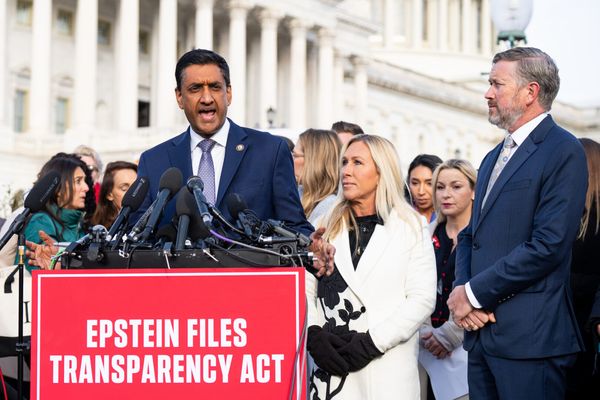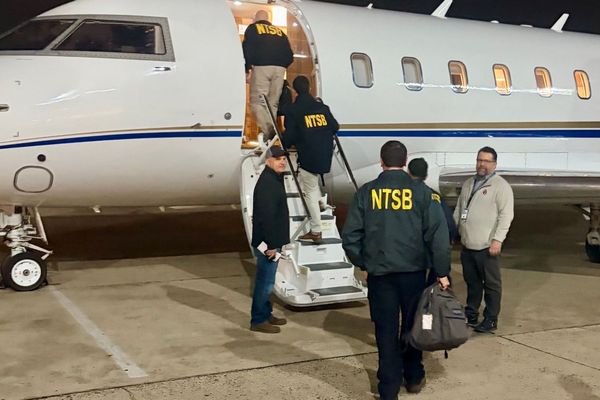Land use in the United States is an ongoing battle between many groups, the strongest entities being those who want to capitalize on its resources, those who want to protect those resources, and those who just wish to explore. And even these further fracture into subcultures that clash on the how, what, why, and where.
Yet, with the introduction of a new proposal by the United States Marines, the threat of losing more public land is only a vignette of what’s in store for the off-road community, especially since the proposal could mean that we lose the insane desert race that is the King of the Hammers.
But that's exactly what's on the table if this proposal goes through. So, what could this proposition mean for the mega-Motorsports event, as well as everyone who enjoys Johnson Valley in California? Let's break it down.

For the uninitiated, King of the Hammers (KOH) is a weeklong spectacle in Johnson Valley that mashes together desert racing, rock crawling, and a pop-up city called Hammertown. What started in 2007 as a small outlaw race has exploded into a motorsports juggernaut, drawing more than 80,000 spectators, millions of digital viewers, and hundreds of teams from around the globe. Helicopters buzz overhead, drones capture every gnarly climb, and the event pumps an estimated $34 million into the local economy each year.
It’s rowdy, it’s chaotic, and it’s a cultural anchor for everyone from garage-built rock crawlers to factory-backed teams. That’s why the Marines’ proposal hits such a nerve.
Here's What the Marines Are Proposing

The U.S. Marine Corps, in coordination with the FAA, seeks to permanently expand and reshape special-use airspace over the Twentynine Palms Combat Center in California. In short, the proposal they've put forth would mean that they’d control a much bigger chunk of sky above Johnson Valley—airspace that’s currently over the land used for recreation and one of the largest off-road events in the world.
The official reason is training: more room, more safety, more flexibility for military aircraft. On paper, it’s a clean-cut proposal. But on the ground—or in the desert, rather—the ripple effect could be massive, as if the Marines take the airspace “from surface to sky,” they’re not just claiming altitude. They could effectively shut down King of the Hammers' ability to get medical helicopters, and helicopters in general, for the event.
KOH isn’t just about horsepower: it’s about logistics and safety. The race relies on helicopters and drones for live coverage, tracking, and most importantly, emergency response. Under the Marines’ plan, civilian aircraft could be barred or heavily restricted in the very same airspace. No air support means slower rescues when crashes happen, fewer eyes on the race, and less media reach for sponsors. In the worst case, it means the event can’t function at all.
There are, however, a few different proposals on the table in terms of how this annexation would play out, which are detailed below.
- Alternative 1 (Most Restrictive): The Military locks down the airspace from ground to sky. No helicopters, no drones. KOH as we know it? Finished.
- Alternative 2 (Preferred by the Marines): Still restrictive, but with some tweaks—lower ceilings in certain areas, no new high-altitude zones. It softens the edges but still leaves KOH fighting for permissions each year. Safety and broadcast coverage remain compromised.
- No-Action Alternative: Leave things as they are. Marines keep training in existing zones, the public keeps access, and KOH continues to thrive.

Not All Is Lost, But It’s Time to Be Ready
The Marines’ proposal might read like a technical shuffle of airspace, but its impact reaches far beyond maps and flight charts. It threatens an event that embodies the grit, creativity, and community of the off-road world. More broadly, it’s another chapter in the story of how public lands are parceled, policed, and pulled from the people who use them.
At its core, this isn’t just about one race; it’s about the future of access, culture, and identity in America’s open spaces. Because once land is taken—or skies are closed—it rarely comes back. And the question remains: how much of that freedom are we willing to give up before we realize what’s already been lost?
All of this centers around a greater land-use struggle we as off-roaders face. This isn’t the first time off-roaders have had to fight for their dirt—or their salt, or their dunes. Public-use lands across the U.S., often managed by the Bureau of Land Management (BLM), have become battlegrounds where recreational riders clash with conservationists, developers, and government agencies.
For riders, it feels like a constant squeeze. From sand dunes in California to desert washes in Utah, trails are shut down in the name of environmental protection, military expansion, or commercial development. Some closures are warranted—fragile habitats and cultural sites do need protection. But too often, enthusiasts argue, the scales tip against recreation, leaving them feeling like second-class citizens on land that’s supposed to belong to everyone.
It’s a bitter paradox: protecting land is noble, but locking it up entirely can strip away a living, breathing culture that thrives outdoors. On the flip side, unfettered access can lead to abuse, erosion, and damage that makes the conservationists’ case stronger. That tension—between preservation, profit, and play—defines the land-use debate.







